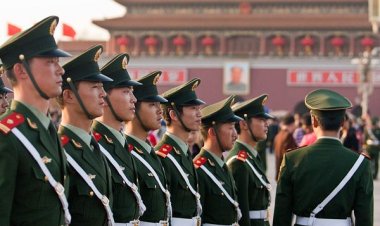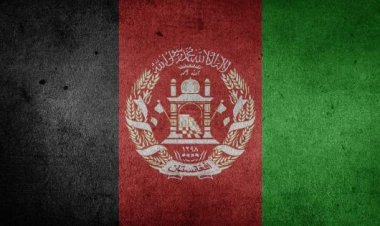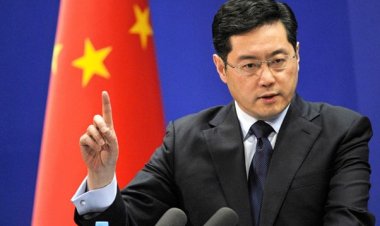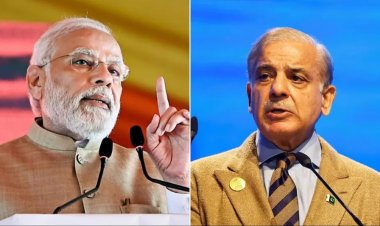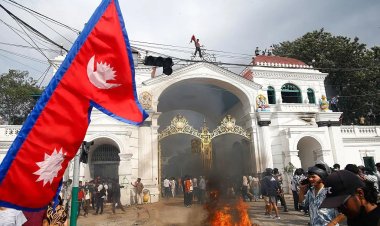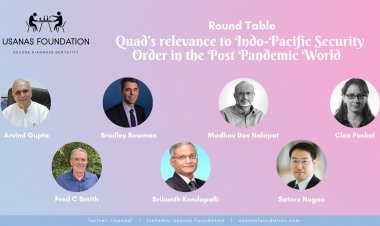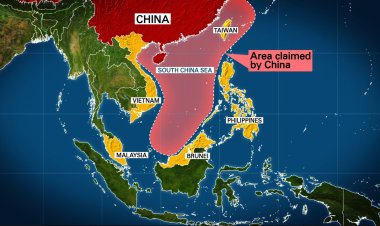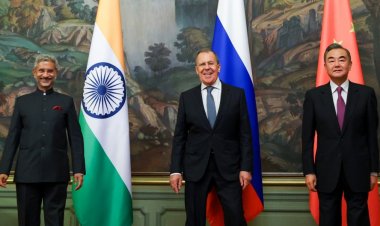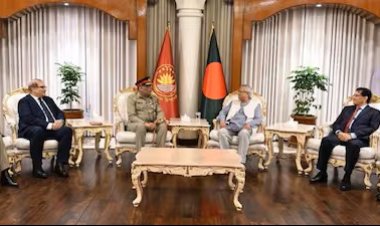Modi May Soon Face a Swift and Short Chinese Military Offensive in 2023
The article analyzed the situation in the Himalayas and how Delhi must be vigilant and brace for a surprise military adventure in the Himalayas after the recent clashes in Tawang, Arunachal Pradesh.
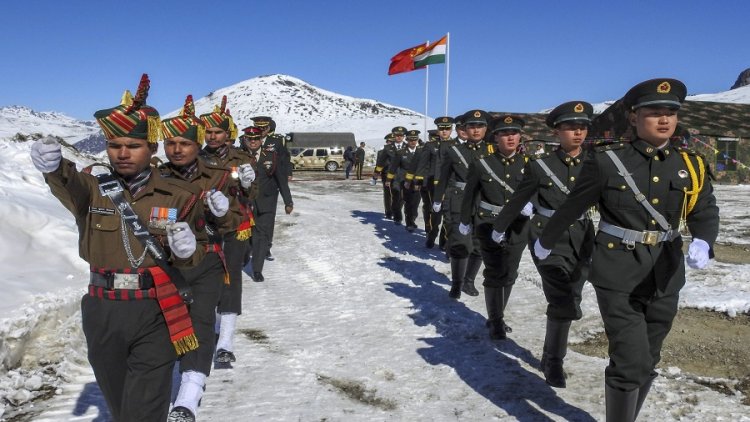
Analysis
By Abhinav Pandya
It has been two-and-a-half years now when, in June 2020, amidst the spread of Corona pandemic, Chinese troops, while conducting incursions into Indian territory, clashed with Indian soldiers in unarmed combat. The brutal fight with rods resulted in the death of 20 Indian soldiers, and the Chinese casualties reportedly ranged between 45 to 60. Officially, Beijing accepted only four casualties after a long gap, adding further to the suspicions about the number of casualties, given the opaque nature of the Chinese state.
The History
The two Asian giants, after the 1962 war, never really got into a military confrontation, except in the battle of Nathu La pass (1967), which was kept under wraps for decades. Following that, the troops on both sides of the border have never carried or displayed arms; however, occasional frictions resulting from Chinese incursions were witnessed in the 1980s, such as the Sumdorung chu stand-off (1987). The breakthrough, which began with Rajiv Gandhi’s China visit in 1987, blossomed in 1993, with the signing of the Border Peace and Tranquility Agreement between the two. For the next two decades, Delhi believed that good economics could offset the bad border situation, and the future of India and China lies in the burgeoning business and trade ties between them. Little did India’s foreign policy mandarins realize that Beijing was following an entirely different playbook that demanded buying time, lying low, and keeping the borders unsettled until it had acquired robust military and economic superiority, strong enough to dictate its own terms in border talks. Globally, the CCP was planning a global superpower status surpassing the US by 2050. Post-2010, Chinese incursions began in Depsang (2013), however, they were seen as aberrations. The Doklam crisis (2017) shook India out of its slumber, and the strategic masterminds started thinking about the underlying and hidden designs of China. Finally, Galwan was a major reality check for India, making a paradigm shift in India’s security calculus. After Galwan, Delhi sees China as its prime adversary.
The business after Galwan has not been usual. One comes across a sense of unease and discomfort among the security and intelligence officials operating in the border areas with China. Though the recent incursions and confrontation were in the Western sector, i.e., the Ladakh region, the unease and apprehensions of border incursions can be easily felt in relatively quieter border areas such as Arunachal Pradesh. Before Galway, if by mistake any Indian grazer crossed into Tibet or vice versa, the border guards did not harass them and, after some routine interrogation, allowed them to return to their respective countries. However, after the Galwan, any such unintended crossing into each other’s territory is treated with deep suspicion and dealt with harshly. Apparently, there is major questioning and evaluation of the fundamental understanding in India’s diplomatic and intelligence world that, with China, good economics will take care of bad geopolitics. As a result, India’s intelligence apparatus, which has so far been fixated on Pakistan, is making desperate attempts to understand China and explore means and methods to develop high-quality intelligence capabilities vis-à-vis China. With Pakistan, common cultural, religious, and linguistic factors enabled the intelligence agencies to build robust networks, strong penetration, and covert operations capabilities within the Pakistani territory; however, with China, it is going to be an uphill task because of Beijing’s superiority in technological, satellite and AI-based intelligence and surveillance methods, language barriers and most importantly, completely opaque nature of the Chinese state system.
On the Chinese side, there are enough reasons to initiate a short and swift military adventure on the border. Though the Chinese state system is opaque and almost impenetrable, it can be reasonably argued from past Chinese statecraft and dealings and recent developments that things can take an unpleasant turn in the Himalayas. CIA reports declassified in 2007 suggest that the 1962 war was to dwarf the growing global stature of India’s popular PM, Nehru. Though India was no match to the military and economic power of the world powers like the US and Soviet Union, under Nehru’s leadership, it was fast emerging as the leader of the non-aligned world, with its firm anti-colonial policies. The NAM’s (Non-Aligned Movement) growing global influence and credibility was also evident in India playing a crucial role in international crises like the Korean War, the Congo crisis, and the Suez Canal blockade. Reportedly, Chinese top leadership i.e. Mao and Premier Lai were not comfortable with Nehru’s rising stature. Chinese were strategic in choosing the timing of the 1962 war, i.e., the US and Soviet Union were engaged in diffusing the Cuban missile crisis. Premier Lai continued to tell Nehru that the border issues were “petty” and that there was no major problem. After the 1962 attack, Nehru felt backstabbed and could never recover from that depression. India’s rising global status was majorly dented.
Modi’s India
Likewise, in the current scenario, China is likely to repeat something similar to 1962 because, under Modi’s leadership, once again, India is emerging as a global player. Under Modi’s leadership, India has shown firm resistance to China in its salami slicing type border incursions in Depsang, Doklam, and Galwan. It has stuck to its stand on the border positions in a determined and steadfast manner and continued to build vital road infrastructure in the border areas. Internally, the Modi government has taken some tough decisions like the abrogation of the special status of Kashmir, surgical strikes inside Pakistan-Occupied Kashmir, and air strikes on the terrorist camps at Balakot, deep inside the Pakistani territory. Also, the Modi government has banned Chinese internet-based applications and extremist groups like PFI, and Jamaat-i-Islami. Also, the Modi government has curbed Chinese funding and influence in think tanks, media, and universities and tightened its noose on the suspicious non-profit institutions and activist organizations by subjecting them to strict legal scrutiny and squeezing their foreign funding. All these severely dented China’s intelligence capabilities and assets in India, which could be used to sabotage any popular parliamentary law, a critical defense project, an economic infrastructure project, and the country’s cyber security. India’s renewed focus on self-reliance in the economic sphere and infrastructural developments are likely to hurt China’s economic and commercial interests in the future. With the fast infrastructure development, India can emerge as a competitive destination for global manufacturing giants. Also, the kind of state surveillance and uncertainties the global corporate giants face in China and the Western world’s growing mistrust of China makes India an even more favorable destination. If Modi comes back in 2024, with a strong majority, he will implement an array of structural and fundamental reforms in governance, economy, defense, internal security, diplomacy, and intelligence which will make India a strong contender threatening China’s global ambitions.
Externally, Modi has taken an independent and principled stance on global geopolitical issues like the Ukraine war, forged strong and independent ties with West Asia, and bagged the G20 presidency for 2023. Also, India’s growing relations with the US will ultimately strengthen Quad, China’s nemesis. All this makes China extremely uncomfortable and apprehensive of a stronger India. Hence, Beijing would not want the Modi-led BJP to come back to power in 2024. If Modi returns in the 2024 elections, his political position will be much stronger, and it will be extremely difficult to uproot him for at least a decade. Ambitions. In such a long tenure, with his strong political position, he will implement an array of structural and fundamental reforms in governance, economy, defense, internal security, diplomacy, and intelligence, which will transform India into a major global military and economic player, antithetical to China’s global ambitions.
My informed interlocutors in the intelligence circles suggest that given China’s world power ambitions, it becomes imperative to dwarf India’s rising global geopolitical footprint and stature, which, in the Chinese perception, cannot happen if there is strong political leadership in India. Modi’s robust domestic popularity and unending election victories can be halted only with an embarrassing defeat in a military conflict, resulting in a major casualty of soldiers and a loss of territory. Modi’s USP among the Indian voters is his strongman’s image, and that can be shattered only with an embarrassing military debacle.
After that, there can be a likely scenario of political uncertainty and chaos. PM Modi’s credibility will be majorly dented, internal fights will begin in BJP, and the leaderless and fractious opposition is expected to forge only a weak coalition government.
Another factor that lures China to consider a swift military offensive is that given the current dampening of Indo-US ties over India’s stand in the Ukraine war, the US is less likely or unlikely to come to India’s defense against China in the event of a military standoff. There is no military alliance between India and the US, nor has the US made any overt pronouncement and commitments, as in the case of Taiwan. Engaging the US in any military or naval confrontation by invading Taiwan may involve a heavy price to pay. The failure of Russia’s Ukraine gamble and the unification of the entire western block against Russia will discourage China from undertaking any such adventure in Taiwan. However, military overtures in the Himalayan region will not invoke such a massive global response.
Additionally, India’s military defeat will send a solid message to South Asia and the powers beyond about China’s proven superiority over India in military matters. Currently, India may not be seen as China’s equal power; however, it is viewed as a rising power challenging China’s influence in South Asia and, lately, to some extent in the global scenario. In South Asia, India still holds a strong influence and can be seen jostling with China over protecting and extending its influence in Nepal, Bhutan, Bangladesh, Maldives, and Myanmar. Galwan, instead of boosting China’s image, dented it. Various foreign and independent sources suggested that forty-five to sixty Chinese soldiers were killed by the Indian troops, which has left China, humiliated and gasping to restore the lost image. In addition, a military adventure on the border can be a good diversion from the nationwide internal protests against the zero-covid policy.
Pakistan’s Interest, War’s Contours, and the Likely Outcomes
Hence, Delhi must be vigilant and brace up for a surprise military adventure in the Himalayas. Though it has conducted several rounds of de-escalation and disengagement talks with Beijing, nuanced analysis of the underlying motives and the ongoing Chinese build-up of new settlements suggest that the possibility of the redux of 1962-styled Chinese deceit needs to be seriously considered by India’s strategic planners. Also, in the event of such Chinese audacity, Pakistan will likely open a second front on the LoC or initiate major ceasefire violations, short of a full-fledged war, to facilitate the infiltration of the militants. Also, Islamabad has several deep-rooted jihadist terror assets and sleeper cells within India which are likely to be activated to build more pressure on the government, and this multipronged strategy to corner India suits China’s ultimate agenda, i.e., to inflict a humiliating defeat in a short and swift military action and embarrass Modi government. This aligns well with Pakistan’s deep state, as after the abrogation of article 370 and a slew of measures against terror financing, Pakistan-sponsored terror infrastructure has been significantly damaged in Kashmir, eroding Pakistan’s credibility in Kashmir. Pakistan cannot afford to lose its base in Kashmir, which its army has described as its jugular vein. More interestingly, the Pakistan army and the deep state also need Kashmir to sustain its tight control over the country’s defense, foreign policy, and budgetary resources. After India retaliated with Balakot air strikes on the Jaish camp deep inside the Pakistani territory, Islamabad knows well that any future attack in India originating from Pak-sponsored terror groups will elicit a harsher response from Delhi, including a major military offensive, which it is not in the position to bear because of its fledgling economy, India’s superior military power and internal terrorism and separatism-related issues. That said, any offensive initiated by China provides Pakistan with the much-needed opportunity to reclaim the lost ground in Kashmir.
In addition to roping in Pakistan to open a second front, China will also use cyber sabotage to attack India’s critical infrastructure, stock markets, and electric grids. Though a detailed discussion on the nature and outcomes of the war is beyond the scope of this article, it can be argued that Chinese gambling may backfire for various reasons.
The Gamble May Backfire
The most recent clash occurred on December 9, in the Tawang region in Arunachal Pradesh, India’s easternmost state claimed by China. About 300 Chinese soldiers contacted the LAC (Line of Actual Control), which was firmly resisted by Indian soldiers. Both countries have different perceptions of the LAC, the undefined India-China border, of which China takes advantage to conduct frequent incursions in the areas claimed by India. Notably, Arunachal Pradesh was the site of the 1962 invasion. Most of the recent clashes were in the western sector, i.e., Ladakh region, barring the December 2021 clash in the Tawang region. However, Chinese military strategy is deeply rooted in deceit and creating smokescreens. As regards the underlying motives behind these recurring incursions, it can be argued that either China is testing India’s resolve and preparation or simply creating distractions from aggressive force posture in Ladakh and Arunachal, and planning the real attack in a different region of LAC, hitherto unthought and unimagined by the Indians.
However, China’s gamble may backfire for various reasons. India of 2022 is not the India of 1962. India’s 1962 debacle resulted from the flawed politico-military decision-making at the top level and the shortage of ammunition, ration supplies, and winter clothing. This time, the Indian Army is well-prepared, equipped, battle-hardened, and much more professional and disciplined. And finally, given the burgeoning Indo-U.S. ties, the U.S.-led Western block (if not for lofty moralistic reasons, then for purely pragmatic geopolitical calculations), will be standing with India. The entire Western propaganda juggernaut will favor India against China. Even the Russians will not be able to openly support China because of their old ties with India. Perhaps, the Chinese gamble in the Himalayas can become a golden opportunity to halt China’s revisionist and expansionist ambitions.
The abridged version of this article was published by The National Interest.
Disclaimer: This paper is the author's individual scholastic contribution and does not necessarily reflect the organization's viewpoint.

